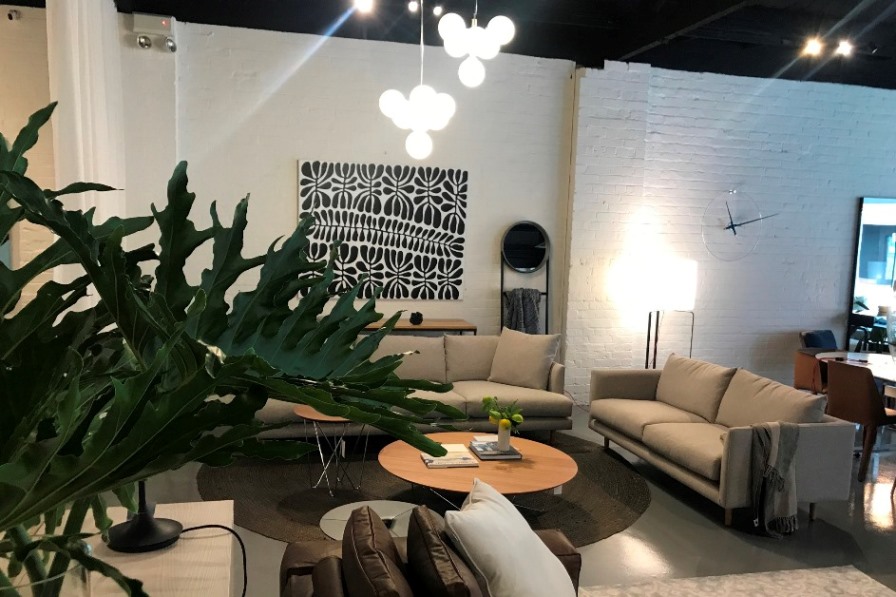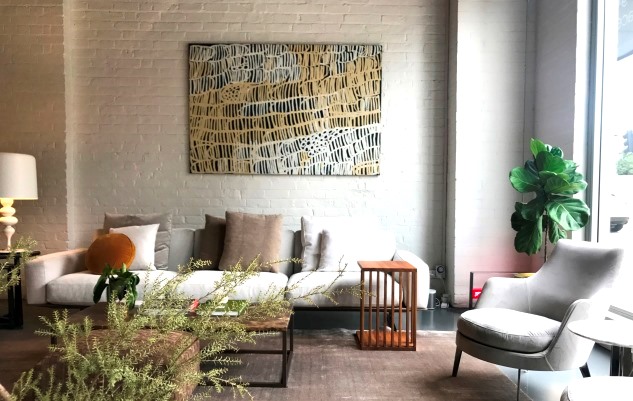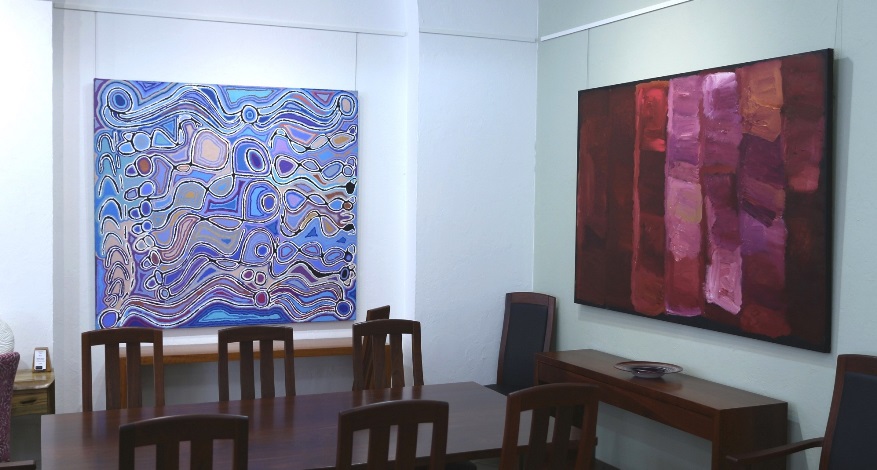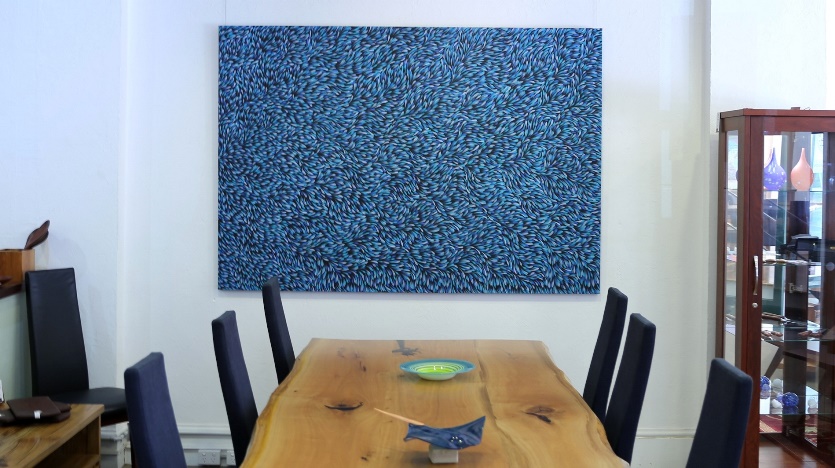The Role of Aboriginal Art In Contemporary Interior Design
Alana Willis is an Interior Design Consultant for Innerspace in Perth. Here she discusses the qualities she believes Aboriginal art brings to contemporary interior design, her role as designer and what she loves about her job.

Why did you select some Aboriginal artworks to hang at the Innerspace showrooms in Perth?
I wanted something with an Australian earthiness to enhance our international furniture brands. I think Aboriginal art can warm a space so well, unlike any other art actually.
Why do you think that is?
I think that there are qualities of warmth and earthiness in the tones that they use, the hues. There's always a story behind the art. The work is not necessarily abstract but it can be, which is why it works so well with furniture as well as interiors.

How do your clients respond?
Our clients have loved the vibrancy and depth of the artwork displayed. It draws the eye to the pieces that are near it. People have commented that the art is amazing.
Is it easy to combine contemporary Italian design furniture with indigenous artworks?
It is actually easier with Indigenous pieces because when you mix something with modern and you need something to warm it up, you can just immediately do it with Indigenous pieces. This is because of the warmth that they bring. When you want to keep a balance in an interior scheme, if you just put one in, no matter what it is, if it's small, if it's sculptural, it does warm everything up straight away.

How does Australia Indigenous art add to contemporary interior design?
Indigenous art grounds an interior space, adding another talking point. Immediately it can bring a space together like no other art genre, creating texture and warmth and depth to a space.
I think that if you don't have an Indigenous piece, especially in this environment you're really missing a key link to where we live. We're in Australia, we're in Western Australia where we have the most amazing Indigenous art and there is a story behind each piece. If you don't have something that, you are missing something important.
Aboriginal art is a talking point and there's such a depth of story behind each piece. It grounds you. I think people can be a little materialistic these days. I feel they need to bring themselves back into being grateful and happy and proud of where we live, and appreciative of the society that we live in and the people who live here.

What special qualities does an interior designer bring to a client when considering a new fit out?
Only a qualified interior decorator or designer can liaise with suppliers to get you the best interior outcomes. People often think that they'll save money by doing the job themselves but little do they know that they have probably spent more in the long run. The resources available to a designer or decorator are so immense that the value really comes into play in the end result. Whether it's just things to balance to a space or where things should be positioned, or selecting pieces, it just makes so much difference in the end.
What advice would you give to homeowners when choosing art to hang in their own homes?
Art needs to not only work as part of an interior scheme but it also needs to speak to you. It needs to be something that you're drawn to personally. Art is also an investment, so it's wise to get advice from an art curator before handing over the big bucks, because it's something that you want to keep in the family, that you want to pass down as well. If your interior designer can sometimes help with that, its a big advantage.

Do the same ideas apply when choosing art for a work space or a corporate place?
It is really interesting to see that commercial and residential interiors are starting to blend a little bit more, because people want commercial spaces to be homely and warm. They want it to be a space where like the reception area, they want a residential sofa or an art piece, they want it to feel comfortable.
We've been doing residential here for about eighteen months, before that it was purely commercial. Now you will see all of these pieces here are commercial but they've been set up in a residential way. They're commercial grade so they can be sold commercially but you'll see people come in to buy a sofa for their home. This furniture works well in both places.
We will have commercial people who come in looking at commercial products and they'll say, I love that, I love that chair, that chair will work and they name a residential site. You also see that hospitality furniture, increasingly people choose it for homes as well. There's a whole overlapping of the genres.

What would your ideal design job be to present a corporate fit out for furnishings and art?
Well, I think a hotel is the most exciting because not only will it have the traffic of people going through that will see it, but also you have that mixture of the residential and the commercial. Everything has to be commercial grade and workable and functional but then it needs to be very homely as well.

You've recently attended the Melbourne design fair, what was your experience of that like?
The Fair was incredible, especially for someone who loves design. I enjoyed seeing up-and-coming companies. We were lucky enough to have some of our suppliers showcasing their goods. One of the highlights was the launch of Nood Co., who Innerspace work with in Western Australia. The Perth boys showed what they can do with concrete and it's mind blowing. We're sitting at one of their tables now, so you can see that there's a thin top of concrete and it's sealed all the way through so it can handle liquids.
What excites you most about your job?
I enjoy turning up to work and seeing how the day unravels. It's a joy working in an environment where I have creative freedom and creative support as well.
I'm just grateful that I get to work with and showcase beautiful pieces in here. I'm grateful for the relationships that we build and are continue to develop.
You can view Japingka artwork at the Innerspace showroom at 509 Murray Street, Perth.
